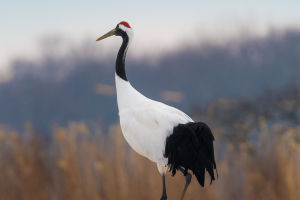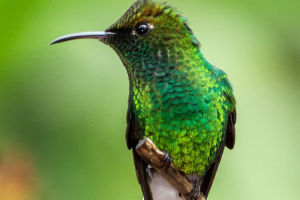Owls are a mysterious and beautiful bird that belongs to the owl family. They are nocturnal predatory birds widely regarded as gentle, mysterious, and enigmatic creatures. Owls have a wide range and can be found in a lot of countries, particularly in Europe, Asia, North America, and occasionally Africa.
Owls are primarily nocturnal birds of prey and are solitary creatures that choose a specific territory and remain independent. They fondly nest in trees or rocks to observe their surroundings and conceal themselves. Owls have great flight capabilities, reaching speeds of 70 km/h or more, and can chase moving targets and search for their food with an eagle's eye in the air.
The owl is a highly diverse bird, with about 200 species of owls in the world. Among them, the common species are the horned eagle, snowy owl, white lord, eagle owl, forest owl, etc.
Their distribution areas vary, and their habits and characteristics are also different. For example, the iridescent horned eagle breeds mainly in North America and Canada, while the white barred owl is common in both Europe and North America. Regardless of the species of owl, they are very mysterious and attractive birds that are loved by people.
However, the current status of owl survival is not very promising. Many owl populations are threatened by habitat destruction, environmental pollution, unreasonable hunting, and illegal trade, leading to reduced population numbers and survival levels.
As human activities continue to expand, owl habitat continues to be destroyed. Pressures such as urbanization and population growth have put many of the habitats where owls are found at risk of decline and loss.
Many owl habitats have been cleared to make way for housing and roads, which puts food sources and habitat space for owls at risk.
Environmental pollution can affect the health and survival of owls. Many owls are exposed to toxic substances and pollutants that can accumulate in their bodies and cause a variety of diseases.
For example, owls breeding in areas contaminated with grass pesticides, rodenticides, and other chemicals can result in weak eggshells and reduced reproductive success.
In some areas, owls face threats from illegal hunting and trade. Owls are a sought-after prey item by many people, and their feathers and other body parts are popular in some local markets. As a result, some people will capture owls by illegal means (e.g., poison bait trapping), resulting in a significant reduction in their numbers.
Although owls are one of the wild animals that people are less exposed to in their daily lives, they have an important ecological role in the natural environment, and protecting them is vital for maintaining the ecological balance of the earth.
Owls can help maintain a healthy ecosystem. Owls have special meanings and symbols in many cultures, such as in ancient Greek and Roman mythology, where they were given the role of symbols of wisdom and death.
In addition, in some cultures, owls have been used as a symbol of observation and learning about nature. Therefore, the conservation of owls is also related to the preservation of cultural heritage.
Owls are a precious creature on Earth, and their conservation helps to maintain biodiversity. Each creature has its unique function, and maintaining biodiversity ensures ecological balance.
Although owls are a bird that most people love, these mysterious and beautiful creatures are currently facing threats to their survival. If we fail to value these animals and take active measures to protect them, then they are at risk of extinction.
Therefore, we should pay more attention to the current state of owl survival and call for global measures to ensure the long-term survival of this species in nature.


